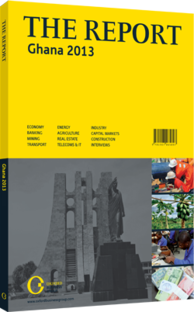Bright prospects: Solar energy projects are attracting interest and investment
With plentiful sunshine in Ghana and foreign investors displaying interest in green projects, the government is planning a robust solar portfolio. Indeed, the Ministry of Energy has set the goal of generating 10% of electricity from modern renewable sources by 2020, and a number of projects are currently being undertaken as part of this objective.
Commissioned in May 2013, a 2-MW photovoltaic power station in Navrango became the nation’s first solar plant, and was expanded to 2.6 MW in July 2013. At the end of 2012, Blue Energy, a UK firm, proposed building the largest solar plant in Africa in the country, a 155-MW facility in Nzema. Additional renewable projects using wind power and biomass-generated energy are at various stages in the pipeline.
HYDROCARBONS DEPENDENCE: In spite of recent hydrocarbons discoveries, Ghana is currently highly dependent on fuel imports and is likely to remain so for the foreseeable future. The renewable energy policy offers an opportunity to capitalise on domestic resources. Ghana has nearly four times the available sunlight as Germany, which generates 9% of its electricity from solar power, according to the Delegation of German Industry and Commerce in Ghana. Ghana’s daily year-round sunlight offers a solar power potential ranging from 4000-7000 KW per sq metre. “During the daytime, solar power could prove more reliable than what we have so far experienced with Ghana’s gasfired plants,” said Frank Otchere, the managing director of system centre control at Ghana Grid Company.
FINANCING: Capital expenditures for solar plants are more than five times as costly as for thermal plants, but the maintenance is minimal. In the long run, a solar plant is, in fact, cheaper, Kofi Ellis, the manager of planning and business development at the Volta River Authority (VRA), told OBG. Additionally, the glut of solar panels on the market has reduced their price in the last few years. Meanwhile, multi-lateral, non-profit and private institutions around the world are expanding financing opportunities for green energy projects. Given Ghana’s capital needs, renewable energy plants may be the best way to draw in necessary foreign investment. “Financing is much easier – all kinds of support is available. The whole world is interested in green energy, so their funds are available,” Ellis said.
The World Bank and its private sector arm, the International Finance Corporation, have both prioritised green energy investments. The German development bank, KfW, and its private counterpart, DEG, have also financed renewable energy projects around the world.
Ghana’s Renewable Energy Act, a legislative package of incentives and regulations passed in 2011, requires the Public Utilities Regulatory Commission to offer preferential rates to renewable energy investors for 10 years, with subsequent review every two additional years. “There are so many proposals coming in. There are more credible tenders for renewable energy than for fossil-fuel power plants,” Ellis told OBG. With mandated price for electricity likely to be raised by the end of 2013, Ghana’s renewable energy sector looks likely to become an even more attractive investment.
SOLAR PROJECTS: The 2-MW Navrongo photovoltaic plant, commissioned in May, cost $8m to construct and was financed by the VRA as part of a larger plan to generate 12 MW in solar power at four separate sites in northern Ghana. Three other sites have been identified and the money has been secured, according to the VRA. Of projects in the pipeline, the largest proposal is UK-based Blue Energy’s plan to construct a 155-MW plant in Nzema. The $400m project is being led by the renewable energy investment firm, with support from Stadium Group, a European asset management company. The project is still in the pre-construction phase, but has been fully planned, according to press reports.
Ghana’s government and the VRA are pursuing renewable energy options beyond solar, which include a wind farm and biomass projects. As these are constructed in the coming years, the country could become a model for renewable energy investment, particularly in solar power, and Ghana just might meet its 10% goal by 2020.
You have reached the limit of premium articles you can view for free.
Choose from the options below to purchase print or digital editions of our Reports. You can also purchase a website subscription giving you unlimited access to all of our Reports online for 12 months.
If you have already purchased this Report or have a website subscription, please login to continue.

